When most people picture Ireland in their minds, I assume – much like myself – they see a patchwork of green, lush fields zigzagged with vibrant hedgerows; or rugged, cliff-edged coastline.
It feels like this is the way it’s always been, but in fact Ireland was, originally, largely forest. However beautiful and productive, our lush, green fields are a human construct.
We have plenty of trees in my own region of north Tipperary, but probably not as much native woodland as there should be to encourage wildlife habitats, soil health and the many other proven benefits a diversity of trees can have on a region.
When we talk about the “benefits of trees”, though, are these benefits purely environmental?
There is one group in Ireland who feel that trees are not only a crucial aspect of our natural environment but are also a great way to bring communities together and make our rural areas an overall nicer place to be.
Hometree
Hometree, an environmental charity based in Co Clare, works to establish and conserve permanent native woodland in Ireland through afforestation, restoration and education.
They aim to “create a landscape in which people and forests flourish together,” and a big part of this process includes developing positive relationships with farmers to support them through the process of planting the right trees, on-farm, for both the environment and their land type.
They also purchase land through donations from the public on which to plant native forest. This has been successful, but as land is scarce, they consider their agricultural work critical.
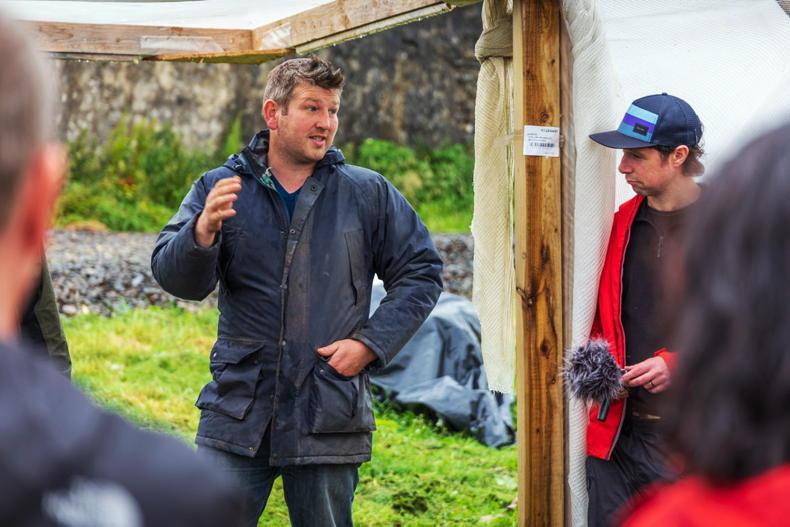
Jeremy Turkington (Seed Savers) with Eoin Murphy on mic speaking at the Ardnaculla Summer School hosted by Hometree Charity that took place in June 2022 in Ennistymon, Co. Clare.
In their five years of existence, Hometree has planted over 30,000 so-called “pioneer trees” – scots pine, willow and alder, for example – and through their Farm-Forest Alliance EIP (European Innovation Project), they plan to plant 30,000 native species in the shelterbelts, copses and hedgerows on partner farms within their locality.
Farm-Forest Alliance
Ray Ó Foghlú is the EIP project coordinator and heads the farm and education programme for Hometree. He says, at the moment, their partner farms are based largely on marginal lands which don’t stand to lose much by afforestation.
“These are all smaller farms in Co Clare and all of these farmers work off-farm, bar one or two, and for lots of demographic reasons they are open-minded to what we have to offer,” he explains.
“They wanted to keep farming, but they aren’t protective of every blade of grass [as you might see on other farms] – so we had more of an open door.
“The nature of any EIP is you’re trying to prove a concept,” he continues, “and what we’ve proven [so far] is farmers could be quite open minded to planting trees on their land.
What we offer is support and flexibility. They don’t need to plant a huge amount; they can plant what they’re comfortable with.”
Community
Science can go a long way in explaining why it’s best practise to do certain things, but Ray feels that community development is equally – if not more – important when it comes to making real change.
“We understand the problems scientifically - and the solutions - but marrying them to social and economic realities is what is needed,” he explains. “I see all these conversations happening [between farmers and ecologists, for example] and I love that stuff, it’s really energising.”
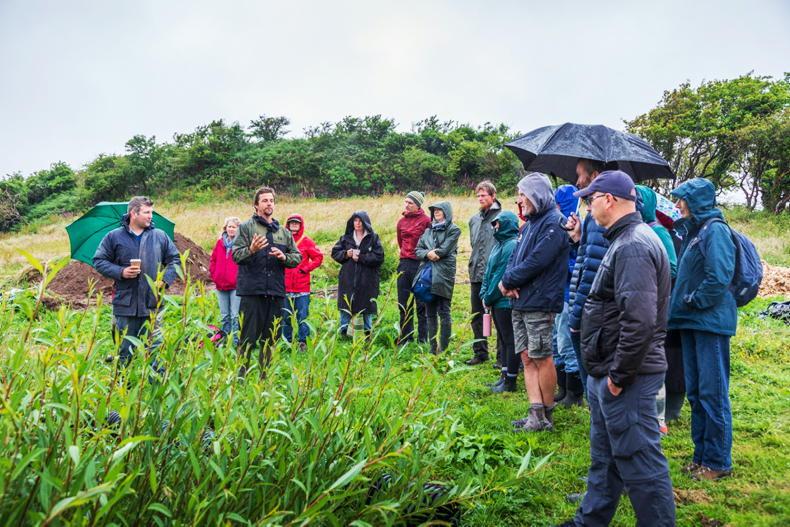
Mitch Corbett speaking at the Ardnaculla Summer School hosted by Hometree Charity
For more information, visit hometree.ie
Hometree accomplishes community outreach in many ways, and last month they hosted an event known as their Ardnaculla Summer School in Ennistymon.
This event brought together people from a diverse range of backgrounds – farming, conservation, forestry and ecology – and was comprised of a mixture of talks, panel discussions and forest visits, along with food and live music.
Farmers from all sectors were represented across the weekend, with Ray facilitating a panel discussion on the challenges and opportunities of farmed forests.
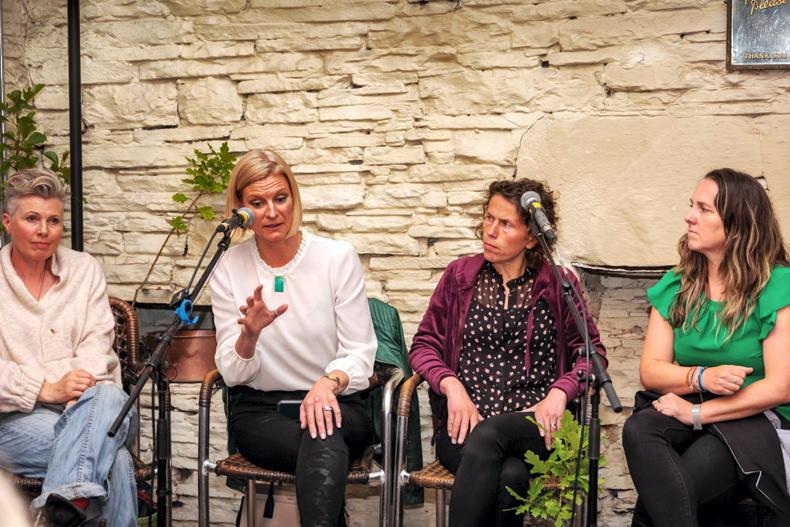
Mary Reynolds, Pippa Hackett, Catherine Farrell (LIFE) & Marina Conway (Western Forest Coop) at Hometree's Ardnaculla Summer School
The discussion ranged from farmers, like James Ham from Co Westmeath, speaking on their own on-farm forestry traditions (James’ family has kept forestry on their farmland for two centuries) and how best to move forward to incorporate more forestry on farms while maintaining productivity.
Despite the benefits and opportunities which forestry can offer to farmers, James, as well as other panellists, admitted there are a number of challenges preventing more farmers from introducing woodlands onto their farms.
Deer issues
Olive Leavy is a commercial forest owner from Westmeath. She raised the issue of deer management.
For example, Sika deer are an invasive species, have no predators in Ireland and often eat newly planted trees if they aren’t adequately fenced off. Of the oak trees she recently planted, she said, “Over half have been pulled up.”
Forestry consultant Manus Crowley echoed Olive’s sentiment, saying, “the types of forests people want - diverse forests, native woodlands and mixed woodlands - with the levels of deer that we have at the moment, it is practically impossible to do.”
Beyond the very important issue of deer numbers and their interference with forestry, Ray asked the panel: what is stopping us from achieving a diverse, productive, native, socially acceptable forestry model?
Manus said the potential of third party (Government) intervention regarding what you can do with your own land is stopping more people from partaking in forestry, while Olive said the increased time it takes to get a licence acts as a deterrent.
She also believes there is a negative perception towards those involved in commercial forestry, saying, “There is a view that you are not a valid farmer and you are not doing anything good for the environment.”
Bureaucracy
The panel also noted the level of bureaucracy that currently exists in the system. Olive said, in many cases, “The financials are not adding up,” but believes the price of capturing carbon per tonne potentially rising over the next three decades could act as a game changer.
“The native woodlands will not absorb the amount of carbon we need to absorb in the next 25 years - we need the conifers to do that,” she said. “What we need is mixed forestry.”
Challenges to farmers
Thomas Duffy, former president of Macra na Feirme and currently a vice president of CEJA (European Council of Young Farmers) was also present over the weekend; attending a panel discussion entitled Visions for a Future Landscape.
Regarding the challenges with which farmers are faced when trying to incorporate nature and biodiversity into farm plans, he said, “We are very much brought up with a mentality of control, and the idea that an active management of a landscape would mean not controlling it is impossible.”
He raised concerns about government policies and the systems within which farmers operate, saying, “We are now dividing farmers very clearly between commercial farmers who are going to make money from their farms and farmers we are going to pay for biodiversity - and if we do that, we are going to end up with a divided country.”
Despite the challenges and obstacles to farmers who want to incorporate biodiversity-supporting practices into their farms, many are still finding a way.
This is leading to new conversations among farmers. Thomas says, “Even inside [the most] commercialised farms there is space for nature - the question is how we make the two sit alongside each other.”
Reporting on the Ardnaculla Summer School by Eoin Murphy.
Read more
National forest estate expands to almost 12% of total land area
Is localisation and clever marketing the key to a sustainable future food model?
When most people picture Ireland in their minds, I assume – much like myself – they see a patchwork of green, lush fields zigzagged with vibrant hedgerows; or rugged, cliff-edged coastline.
It feels like this is the way it’s always been, but in fact Ireland was, originally, largely forest. However beautiful and productive, our lush, green fields are a human construct.
We have plenty of trees in my own region of north Tipperary, but probably not as much native woodland as there should be to encourage wildlife habitats, soil health and the many other proven benefits a diversity of trees can have on a region.
When we talk about the “benefits of trees”, though, are these benefits purely environmental?
There is one group in Ireland who feel that trees are not only a crucial aspect of our natural environment but are also a great way to bring communities together and make our rural areas an overall nicer place to be.
Hometree
Hometree, an environmental charity based in Co Clare, works to establish and conserve permanent native woodland in Ireland through afforestation, restoration and education.
They aim to “create a landscape in which people and forests flourish together,” and a big part of this process includes developing positive relationships with farmers to support them through the process of planting the right trees, on-farm, for both the environment and their land type.
They also purchase land through donations from the public on which to plant native forest. This has been successful, but as land is scarce, they consider their agricultural work critical.

Jeremy Turkington (Seed Savers) with Eoin Murphy on mic speaking at the Ardnaculla Summer School hosted by Hometree Charity that took place in June 2022 in Ennistymon, Co. Clare.
In their five years of existence, Hometree has planted over 30,000 so-called “pioneer trees” – scots pine, willow and alder, for example – and through their Farm-Forest Alliance EIP (European Innovation Project), they plan to plant 30,000 native species in the shelterbelts, copses and hedgerows on partner farms within their locality.
Farm-Forest Alliance
Ray Ó Foghlú is the EIP project coordinator and heads the farm and education programme for Hometree. He says, at the moment, their partner farms are based largely on marginal lands which don’t stand to lose much by afforestation.
“These are all smaller farms in Co Clare and all of these farmers work off-farm, bar one or two, and for lots of demographic reasons they are open-minded to what we have to offer,” he explains.
“They wanted to keep farming, but they aren’t protective of every blade of grass [as you might see on other farms] – so we had more of an open door.
“The nature of any EIP is you’re trying to prove a concept,” he continues, “and what we’ve proven [so far] is farmers could be quite open minded to planting trees on their land.
What we offer is support and flexibility. They don’t need to plant a huge amount; they can plant what they’re comfortable with.”
Community
Science can go a long way in explaining why it’s best practise to do certain things, but Ray feels that community development is equally – if not more – important when it comes to making real change.
“We understand the problems scientifically - and the solutions - but marrying them to social and economic realities is what is needed,” he explains. “I see all these conversations happening [between farmers and ecologists, for example] and I love that stuff, it’s really energising.”

Mitch Corbett speaking at the Ardnaculla Summer School hosted by Hometree Charity
For more information, visit hometree.ie
Hometree accomplishes community outreach in many ways, and last month they hosted an event known as their Ardnaculla Summer School in Ennistymon.
This event brought together people from a diverse range of backgrounds – farming, conservation, forestry and ecology – and was comprised of a mixture of talks, panel discussions and forest visits, along with food and live music.
Farmers from all sectors were represented across the weekend, with Ray facilitating a panel discussion on the challenges and opportunities of farmed forests.

Mary Reynolds, Pippa Hackett, Catherine Farrell (LIFE) & Marina Conway (Western Forest Coop) at Hometree's Ardnaculla Summer School
The discussion ranged from farmers, like James Ham from Co Westmeath, speaking on their own on-farm forestry traditions (James’ family has kept forestry on their farmland for two centuries) and how best to move forward to incorporate more forestry on farms while maintaining productivity.
Despite the benefits and opportunities which forestry can offer to farmers, James, as well as other panellists, admitted there are a number of challenges preventing more farmers from introducing woodlands onto their farms.
Deer issues
Olive Leavy is a commercial forest owner from Westmeath. She raised the issue of deer management.
For example, Sika deer are an invasive species, have no predators in Ireland and often eat newly planted trees if they aren’t adequately fenced off. Of the oak trees she recently planted, she said, “Over half have been pulled up.”
Forestry consultant Manus Crowley echoed Olive’s sentiment, saying, “the types of forests people want - diverse forests, native woodlands and mixed woodlands - with the levels of deer that we have at the moment, it is practically impossible to do.”
Beyond the very important issue of deer numbers and their interference with forestry, Ray asked the panel: what is stopping us from achieving a diverse, productive, native, socially acceptable forestry model?
Manus said the potential of third party (Government) intervention regarding what you can do with your own land is stopping more people from partaking in forestry, while Olive said the increased time it takes to get a licence acts as a deterrent.
She also believes there is a negative perception towards those involved in commercial forestry, saying, “There is a view that you are not a valid farmer and you are not doing anything good for the environment.”
Bureaucracy
The panel also noted the level of bureaucracy that currently exists in the system. Olive said, in many cases, “The financials are not adding up,” but believes the price of capturing carbon per tonne potentially rising over the next three decades could act as a game changer.
“The native woodlands will not absorb the amount of carbon we need to absorb in the next 25 years - we need the conifers to do that,” she said. “What we need is mixed forestry.”
Challenges to farmers
Thomas Duffy, former president of Macra na Feirme and currently a vice president of CEJA (European Council of Young Farmers) was also present over the weekend; attending a panel discussion entitled Visions for a Future Landscape.
Regarding the challenges with which farmers are faced when trying to incorporate nature and biodiversity into farm plans, he said, “We are very much brought up with a mentality of control, and the idea that an active management of a landscape would mean not controlling it is impossible.”
He raised concerns about government policies and the systems within which farmers operate, saying, “We are now dividing farmers very clearly between commercial farmers who are going to make money from their farms and farmers we are going to pay for biodiversity - and if we do that, we are going to end up with a divided country.”
Despite the challenges and obstacles to farmers who want to incorporate biodiversity-supporting practices into their farms, many are still finding a way.
This is leading to new conversations among farmers. Thomas says, “Even inside [the most] commercialised farms there is space for nature - the question is how we make the two sit alongside each other.”
Reporting on the Ardnaculla Summer School by Eoin Murphy.
Read more
National forest estate expands to almost 12% of total land area
Is localisation and clever marketing the key to a sustainable future food model?














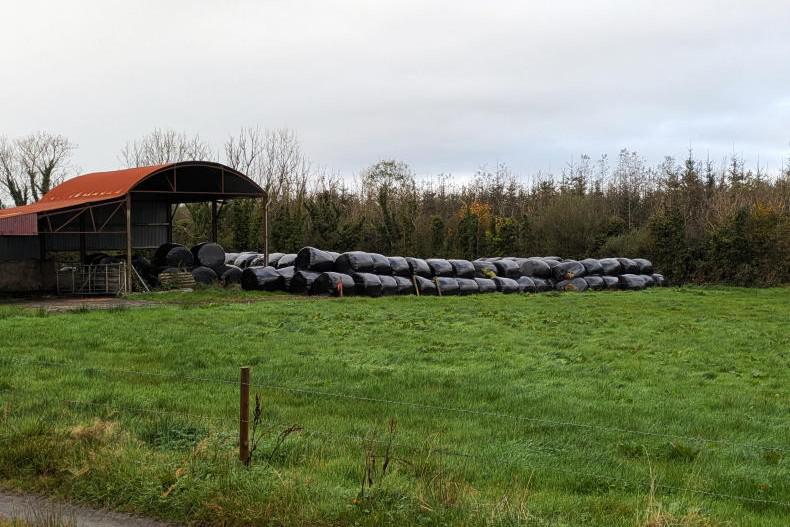
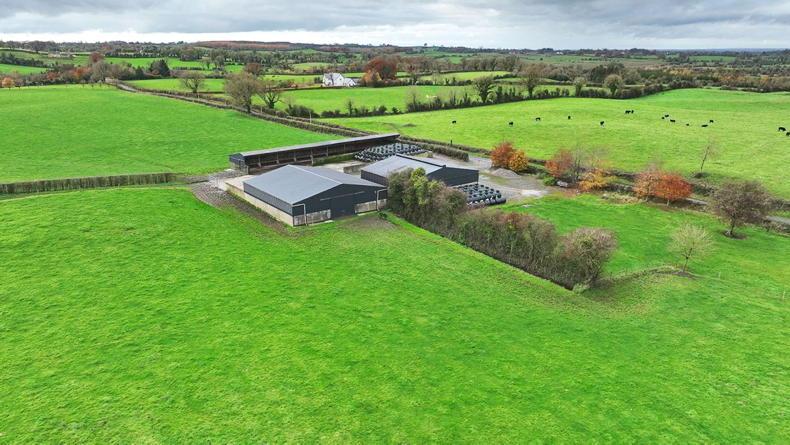
SHARING OPTIONS